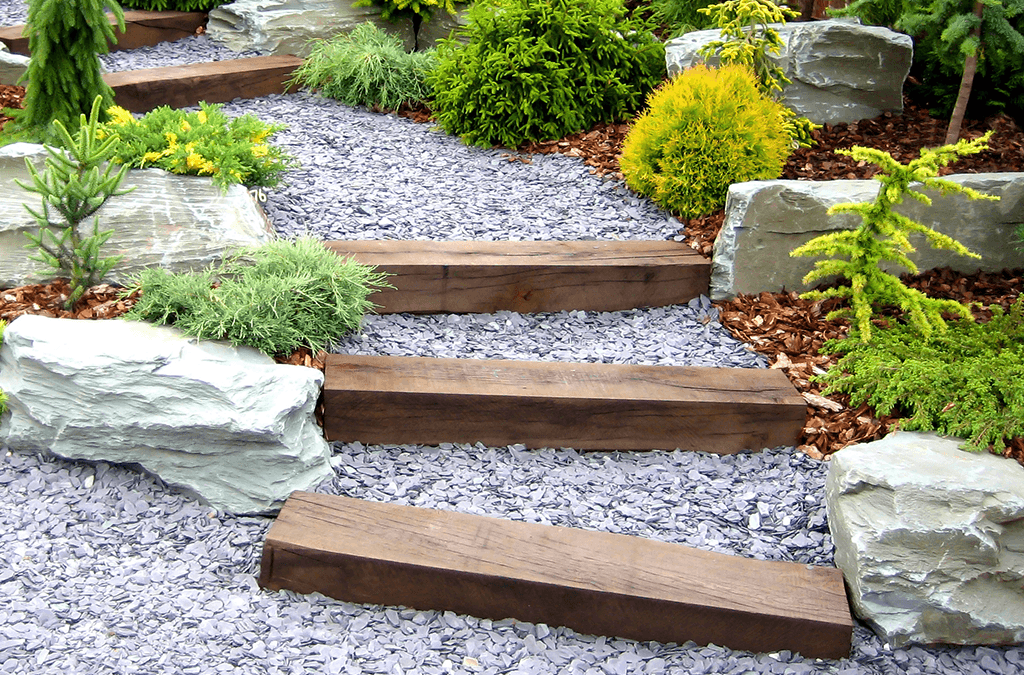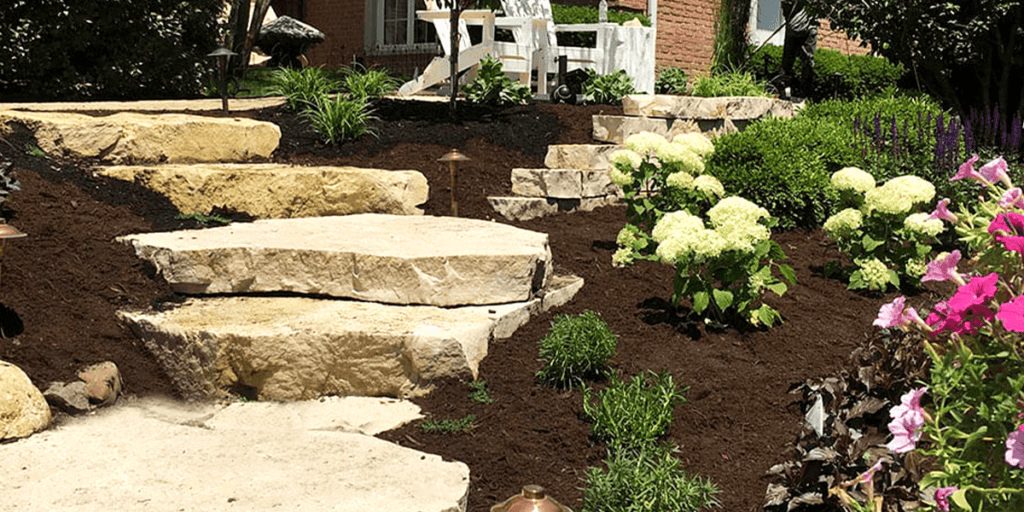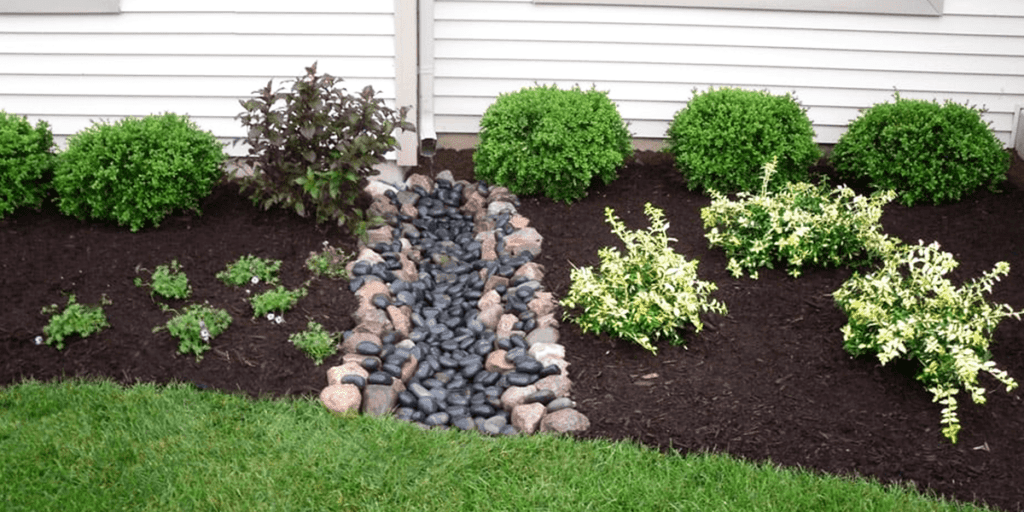Landscaping stones are often an essential part of garden design. They’re used for anything from pathways to edging, creek beds, garden mulch, and more. Choosing the right type of stones can be overwhelming.
Here’s a guide to help you understand the options, and choose the best ones for your purpose!
What Are the Different Types of Landscaping Stones?
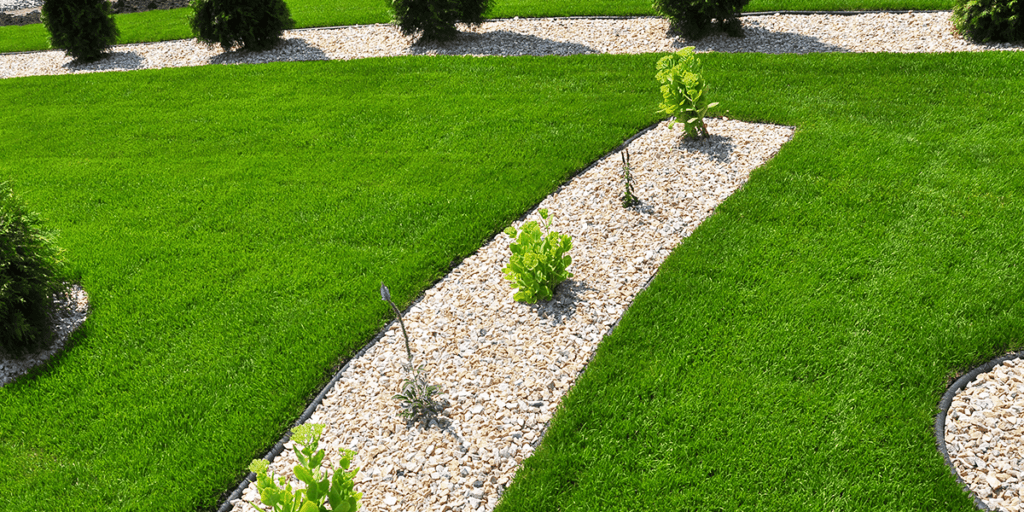
Small Landscaping Stones
Let’s start with the smallest types of stones, also known as gravel. There are two main kinds:
- Pea Gravel: is naturally weathered, and hence is rounded, smooth, and soft to touch. It comes in a variety of colors and is about the size of a pea.
- Crushed Gravel: this is gravel made by crushing stone into a desired size. As a result, it has a rough texture. It comes in various sizes, colors, and types of stone.
Medium Landscaping Stones
These stones are bigger than gravel, roughly 1-2” in size, or big enough to comfortably pick up and throw into a lake.
- River rock: like pea gravel, except larger, river rock is naturally weathered, rounded, and smooth. It comes in various colors.
- Lava Rock: this is volcanic rock harvested from old volcanoes. It is rough, lightweight, and has a volcanic appearance. It comes in reddish-brown, black, or gray.
- Crushed Stone: this is a rough-edged, angular rock made by crushing stone down to a desired size. It comes in a variety of sizes, colors, and aesthetics.
Large Landscaping Stones
- Boulders: these are large, naturally weathered rocks. They are used for decorative or structural purposes in landscape design.
- Flagstone: these are flat pieces of natural stone used as stepping stones or in stone pathways. They have irregular shapes and rough edges, and come in a variety of sizes, colors, and types.
- Outcropping: these are large slabs of naturally weathered quarried rock. They are used for decorative purposes, or in stone walls and steps in landscape design.
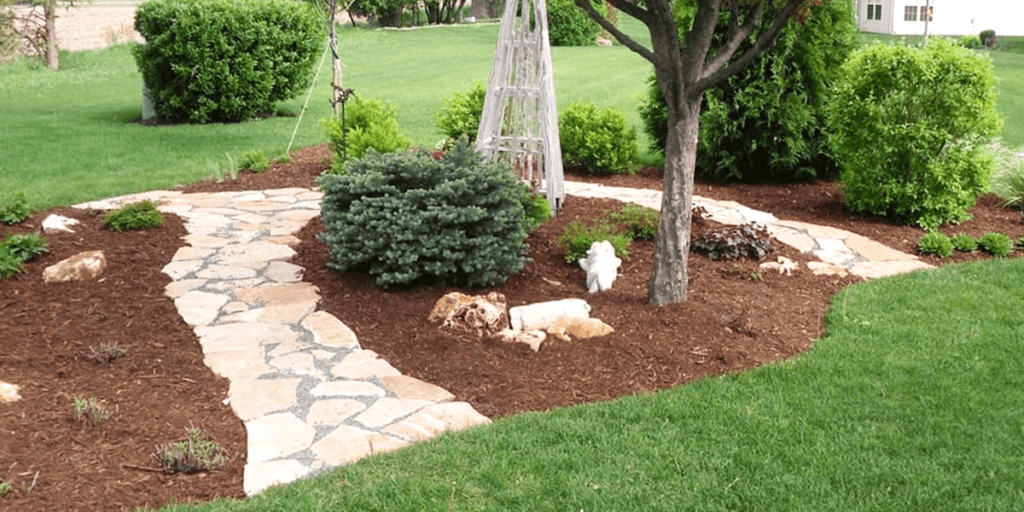
The Main Uses of Landscaping Stones: What to Use Where
Stone Pathways
On a pathway, you want a solid foundation to walk on, and to move wheelbarrows and lawnmowers across. That means you’ll want to use small stones, like gravel or pebbles, which compact nicely. Or you’ll want larger stones for stepping on, like flagstone, surrounded by something smaller. Note: it is difficult to push a lawnmower across medium-sized rocks.
Best Choices: Crushed Gravel, Pea gravel, or Flagstones (with medium or small stones around them).
Garden Beds
When choosing stone mulch for a garden bed, the appearance is important to consider. How do you want it to look? Functionality is also important. In a garden, you’ll have to move stones aside to plant new plants, occasionally weed beneath the stones, and rake or blow leaves from on top of them.
Best Choices: River Rock, Lava Rock, Crushed Stone, or Pea Gravel.
Drainage Areas
These are creek beds, basins around a fountain, or any area that handles a lot of water. You’ll want to use landscaping stones that stay in place, and don’t wash away.
Best Choices: River Rock, Crushed Stone, or Boulders.
Questions to Consider When Choosing Landscaping Stones
Will They Spread Around?
In other words, are those pebbles going to stay in place? Will the kids track them into the house or into the garden every time they walk on them? Is water from the drain pipe going to dislodge them? Proper edging is always important to keep landscaping stones from migrating. But the right choice of stones also comes into play.
Are They Easy to Walk On?
Think about all the things you’ll be dragging across them, like a lawnmower, or a recycling bin. Will they hold up under the weight, and will those landscaping stones be easy to move across? Choose the right stones for how you’ll be using them.
Are They Beautiful?
Beauty is the most important question, especially when it comes to laying landscaping stones in your garden beds. Do you find the color and texture beautiful? Do they harmonize with the colors of your house and driveway, etc.?
If you have more questions, or want to see these rocks in person, feel free to drop by our centros de jardinería de Bloomingdale y Carpentersville.
Platt Hill Nursery es el principal centro de jardinería y vivero de Chicago.

